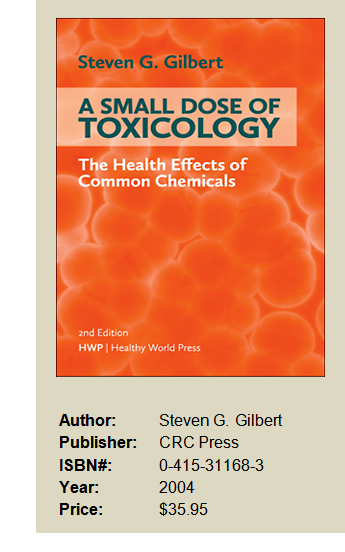 This book is exactly what it purports to be, namely a small dose of toxicology. Written expressly for those individuals who have no prior scientific background, the book presents in very readable fashion basic facts about common toxic compounds and their effects on people. The book evolved out of a continuing education course which the author taught for the Department of Environmental and Occupational Health Services at the University of Washington. This book is exactly what it purports to be, namely a small dose of toxicology. Written expressly for those individuals who have no prior scientific background, the book presents in very readable fashion basic facts about common toxic compounds and their effects on people. The book evolved out of a continuing education course which the author taught for the Department of Environmental and Occupational Health Services at the University of Washington.
This book would be excellent for use in an undergraduate safety course or for use in a toxicology course for non-majors (100-200 level). It would serve well as additional material for a high school biology course and a copy of it definitely belongs in every home in America. The book has four especially helpful features: 1) a glossary of terms, 2) equivalent values integrated into the text (e.g., concentration of caffeine equivalent to volume of coffee in mL and in ounces), 3) cases taken from everyday life, and 4) a list of government agencies and non-governmental organizations with their web addresses from which one can obtain further information at the end of each chapter.
This textbook has 1 author, 266 pages, and numerous figures and tables. In addition to the table of contents and the index, there are three appendices: 1) a glossary of terms with definitions and examples, 2) a list of abbreviations used in the text, and 3) and an appendix demonstrating and explaining the principles of dose-response. Each of the 19 chapters has: 1) a website address for a slide presentation, 2) a list of web sites for [a] European, Asian, and international agencies, [b] North American agencies, and [c] non-governmental organizations from which one can obtain further information, and 3) a list of references (approximately 3-10 per chapter).
The book is organized into four sections. The first section has two chapters on principles of toxicology and toxicology as it affects the reader/citizen. The second section has 12 chapters on toxic agents. These include alcohol, caffeine, nicotine, pesticides, lead, mercury, arsenic, metals, solvents, radiation, animal and plant toxins, and environmental contaminants. The third section has three chapters including: 1) neurotoxicology, 2) cancer and genetic toxicology, and 3) pregnancy and developmental toxicology. The last section has two chapters concerned with applied toxicology: 1) toxins in the home, and 2) risk assessment and risk management. Typical chapter outline uses the following plan: 1) dossier, 2) case studies, 3) introduction and history, 4) biological properties, 5) health effects, 6) reducing exposure, 7) regulatory standards, 8) recommendations and conclusions, and 9) more information and references.
Overall this book is an easy read which will be especially appreciated by those individuals wanting a quick overview of the most salient facts. The book is not recommended for an undergraduate survey course because of the limited scope of the scientific information but is strongly recommended for the non-scientist and non-scientific majors.
|
